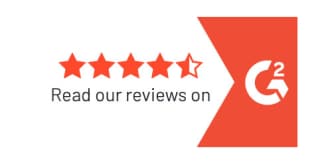When it comes to saving for retirement, 401(k) plans are a popular choice. They offer tax advantages and are often provided by employers to benefit their employees. But not all 401(k) plans are the same.
There are two main types: traditional 401(k)s and Roth 401(k)s. Each has its unique advantages, similarities, and differences.
Differences Between Traditional and Roth 401(k)s
- Timing of tax benefits
With a traditional 401(k), you get the tax benefits up front when you make your contributions. This comes in the form of a deduction from your taxable income. Alternatively, with a Roth 401(k), you get the tax benefits later when you withdraw your money during retirement. So, no deduction up front, but you never pay taxes on the money again.
- Tax treatment of your contributions
A traditional 401(k) allows you to make contributions on a pre-tax basis. This means that the money you contribute to your 401(k) is not subject to income tax when you contribute. Instead, the money is taxed when you withdraw it during retirement. So, for example, if you earn $60,000 annually and contribute $6,000 to your traditional 401(k), you’ll only pay income taxes on $54,000.
With a Roth 401(k), you make contributions with after-tax dollars. This means you pay taxes on the money you contribute up front, but you can withdraw your contributions and any earnings tax-free during retirement. So, for example, if you earn $60,000 annually and contribute $6,000, you still pay income taxes on the entire $60,000, but you won’t pay any taxes in retirement when you distribute the $6,000 and its earnings.
- Employer matching contributions
Many employers choose to offer employees a company match to incentivize saving for the future using the 401(k) plan. Both traditional and Roth contributions are eligible for employer matching. Just recently a law was passed (SECURE 2.0) that allows employees to decide whether they want employer contributions to be pre-tax or Roth. Previously matching contributions were always made pre-tax.
This is important to note if you ever choose to roll over your funds to a new employer or Individual Retirement Account (IRA) because you’ll need to keep the pre-tax and after-tax funds separate during the rollover process.
Similarities Between Traditional and Roth 401(k)s
Despite their differences, traditional and Roth 401(k)s have many similarities.
- Employers can match contributions. An employer match is normally made pre-tax, but employees can decide if they want that to be Roth now. Employee contributions are eligible for employer matching, whether they are traditional or Roth.
- Contributions are capped. The IRS has annual contribution limits for traditional and Roth 401(k)s. The limits are the same for both and are $22,500 for 2023 or up to $30,000 for employees aged 50 and over.
- No income limits. While Roth IRAs and deductible IRA contributions can be limited by income, traditional and Roth 401(k)s have no income restrictions. This can make them a valuable account type for even the highest income earners.
- You can use both. If your employer offers a traditional and Roth 401(k) option, you can use either one or both. This can be a great way to diversify your income sources for retirement by having pre-tax and after-tax funds. However, remember that both accounts count towards the same annual contribution limit. For example, if you are under age 50 in 2023 and contribute $15,000 to your traditional 401(k), you can only contribute another $7,500 to your Roth 401(k) for a total of $22,500.
- They’re employer-sponsored. Unfortunately, if your employer doesn’t offer a traditional or Roth 401(k), you can’t open one independently.
- Investments grow tax-free. One key benefit of both account types is that your investments grow tax-free. That means as long as the investments are inside the account, growing and compounding for the future, you won’t pay any taxes on the gains, dividends, or interest along the way.
- Penalty-free withdrawals after age 59.5. Both accounts allow for penalty-free withdrawals once you reach age 59.5. There are also penalty exceptions for death, disability, and hardship.
Advantages of Traditional and Roth 401(k)s
Lastly, consider the advantages of each when deciding whether to contribute to a traditional or Roth 401(k).
Traditional 401(k) Advantages
The key advantage of a traditional 401(k) is that your contributions are pre-tax (deducted from your taxable income.)
This is often used by high earners who believe their tax bracket today is higher than their future tax bracket in retirement. By contributing to a traditional 401(k), high earners can get a tax deduction at a higher tax rate and then withdraw the funds at a lower tax rate during retirement.
For example, if you are in your peak earning years, you could pay 32% or more in federal income taxes. So, if you contribute $20,000 to your traditional 401(k), you save $6,400 in federal income taxes ($20,000 X .32 = $6,400.) But, your income in retirement may be much lower, putting you in the 22% tax bracket. This means that the same $20,000 distributed in retirement would only create a tax bill of $4,400 ($20,000 X .22 = $4,400).
Roth 401(k) Advantages
Alternatively, a Roth 401(k) is funded with after-tax dollars, but the distributions are tax-free during retirement.
This is often used by savers in a low tax bracket today who anticipate a higher tax bracket during retirement. By contributing to a Roth 401(k) in a low tax bracket, you essentially lock in your low tax rate and never pay taxes on the money again.
Ultimately, deciding which type of 401(k) to use depends on a number of factors, and there is no one-size-fits-all approach. Instead, consider speaking with a trusted financial advisor to better understand which is suitable for you and your unique situation.
401GO Offers Roth and Traditional 401(k)s
At 401GO, we provide small business 401(k) plans powered by an easy-to-use platform. Both Roth and traditional plans are available, and most employers offer both options to their teams. Many small businesses opt to use a safe harbor 401(k) plan, which allows for both Roth and traditional contributions.
If your company is considering starting a new 401(k) plan, or transferring an existing plan to a new provider, please contact us. We would be happy to answer your questions.



